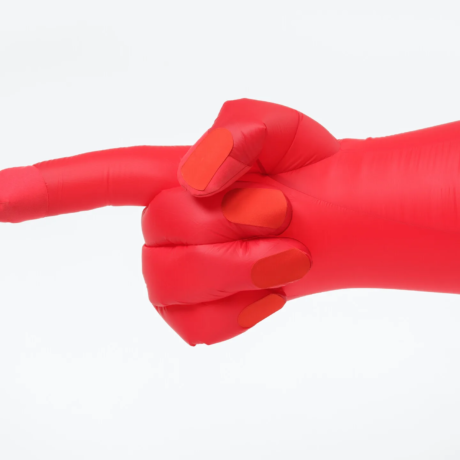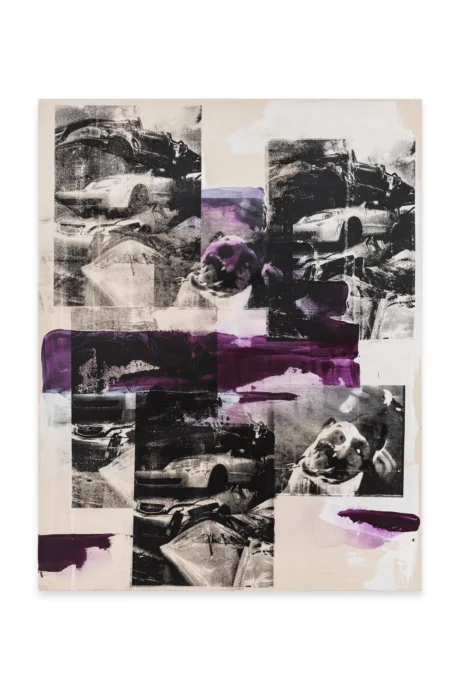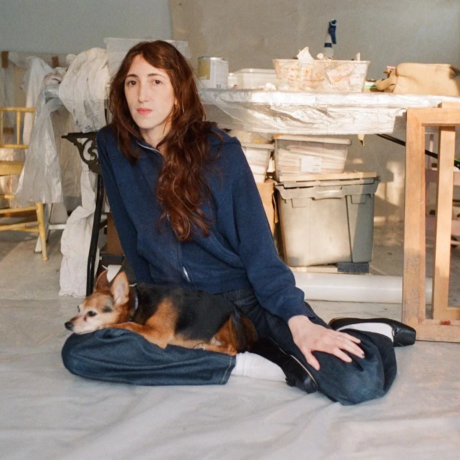Shaquille Heath speaks with Seph Rodney about winning, losing and Get In the Game at the San Francisco Museum of Modern Art.
Growing up I often heard the old adage, “There’s more to life than winning and losing.” I can tell you that even then, that phrase felt like a farce. Everything that we do–all the things we want to achieve, to experience, to satiate within our desires–can often be relegated to the constructs of winning or losing. When good things happen in our lives, we’ll celebrate that as “a win.” And when bad things happen, we’re taking that L with the best of them. Our every day is routinely marked with little competitions, as much as with other people as with ourselves, and it’s an interesting revelation when you start seeing it that way. It may very well be the reason why it’s called “the game of life.”
This week the San Francisco Museum of Modern Art opens Get in the Game, an exhibition that explores sports through the lens of art and design. And while the focus is on athletic competition, and the ways artists are influenced, inspired, and impacted by its many facets, the sports analogies will hit close to home for just about anyone. It is in the human condition to desire praise and attention, glory and fame. And to push our bodies to the limits of achieving is something artists know all too well. While it may feel that art and sports, their audiences and fans, exist at opposite ends of a spectrum, we are reminded once again that there is more that we have in common that we take the time to think. Get in the Game ponders it all.
I spoke with one of the co-curators Seph Rodney about the curatorial vision and direction for the exhibition. Within our conversation you will see that Get in the Game is not just a title, but a dare-driven demand. It’s time to get off the sidelines.
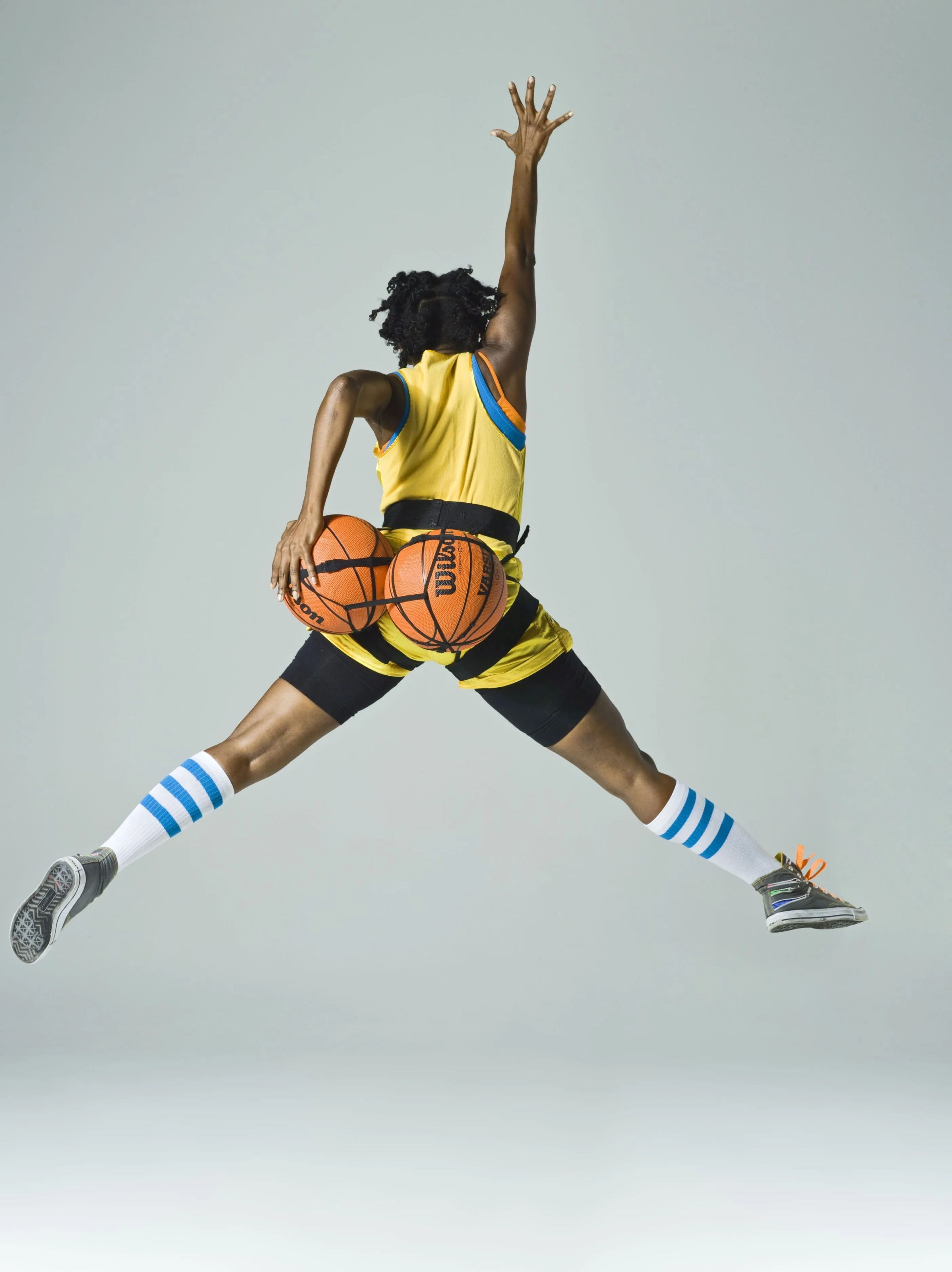
Shaquille Heath: What is your relationship to sports?
Seph Rodney: When I was a kid I loved running. I loved moving fast, and I wasn’t particularly coordinated. So although I was on the high school basketball and soccer teams, I was mostly a bencher. Then as I got older, my interest shifted. I became a fencer. I learned to fence at the McBurney YMCA, which is at 23rd and 7th street in Chelsea in Manhattan. When I went on to grad school I fenced on the team at UC Irvine. I fenced for 14 years.
And I should mention, I was never really good. I’m just a really bad performer. Like when there was a competition, I was just a bundle of nerves. In practice, I was much better. But I stuck with it. So there’s that.
SH: I read your essay in the exhibition’s accompanying catalog–which is an incredible catalog–and I was really intrigued by reading that about you. For one, it’s not a very American sport to participate in. And two, it’s not a sport that Black people typically do. How did you find yourself fencing?
SR: So when I was in my early 20s, I was sort of on hiatus from college. I tried to go, but then I found that it wasn’t really working for me, and I was dealing with depression at the time. I found my way out of that and was working at a hospital, actually Mount Sinai Hospital. There’s a doctor, who worked there–his name is Philip Stern, and Philip and I kind of became friends, and he fenced. When I found out, I said, “Wow, you fence, that’s amazing!” And he said, “Do you want to learn? You can come with.” So he took me to his fencing school, which is somewhere in Queens. That’s when I started. So that must have been ‘91 or ‘92.

SH: That is something that I think is pretty special about the exhibition. There is inclusion of a lot of different kinds of sports. Like right on the cover of the catalog is a skateboarder. I’m wondering about your thought process within the kinds of sports that you wanted to bring into the exhibition, and if there were any boundaries there?
SR: That’s a good question. So I have to lean on what we all did as a team. So Katy, Jennifer, and I, are the heart of the curatorial effort. And let me say, Katy and Jennifer are two of the smartest women I’ve ever worked with, and I feel genuinely blessed that I was able to work with them on this show. Because if I were working with colleagues with whom I did not get along or see eye to eye, the past two and a half years would have been grueling. But because they are who they are, they are not only just lovely human beings, but they’re also really good professionals. So I just want to shout them out.
A primary question, before we even got to what sports to include, was, are we talking about just sports? We could be talking about play, but after arguing about that back and forth, we figured out that what we really want to hone in on is athletic competition. Formalized athletic competition. Because that’s where certain things come to the surface, like social change, right? Like the agony of losing. The kinds of sociality that brings people together. That brings the various segments of the human tribe into one place to sort of battle it out by proxy.
Once we decided that in terms of the breadth and depth of the exhibition, we really wanted to include a lot of the other sports. It was always obvious that we were going to have American football, soccer, (which the rest of the world calls football,) basketball, and baseball well represented. We knew that that was going to happen. We also wanted to do things like include cricket. We flirted with surfing. Swimming–Derek Fordjour’s work shows up. Running–Savannah leaf. But we in terms of our thinking, we knew that we wanted to stretch the parameters of what a typical US American audience would expect from a sports show.
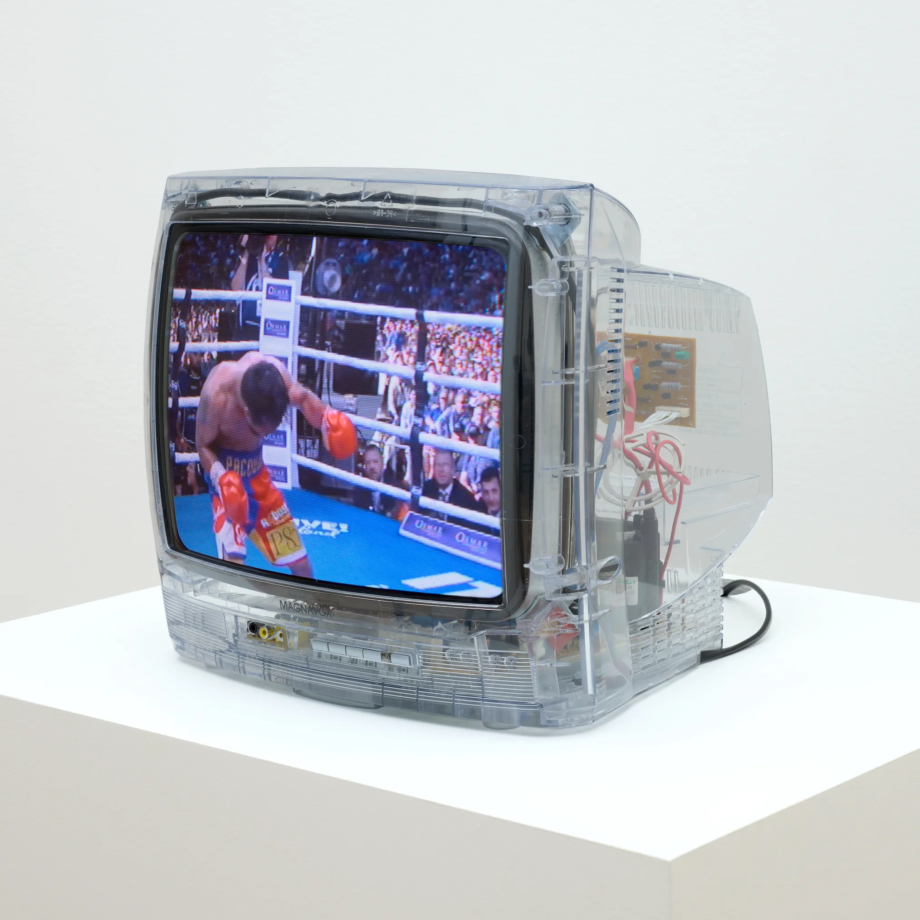
SH: So did you consider breakdancing in this thought process? Or did the Olympics ruin that for you? haha!
SR: Ooh, yes. That was such a bad look for Australia. It was so cringe. I mean, that was one of the things that kind of was on the radar and off pretty quickly, I think we didn’t want to do anything that looked gratuitous. Like we didn’t want to just include something just for the sake of having something included. So when we were looking through artists whose work was really enticing and compelling to us, none of what we initially saw had much to do with breakdancing. It just just didn’t show up in the artists we were looking at. And I think we also knew from early on that we were going to carve out a niche in the show for Unity (a skate collective founded by Jeffrey Cheung and Gabriel Ramirez, who curated an exhibition for the second floor Unity through Skateboarding). We didn’t know what it was then, but we knew that we wanted something, in a sort of crass way to say, “of the streets.” That does have that competition aspect, but is not so formalized, that is not so heavily regulated.
There’s this beautiful work by Alejandra Carles-Tolra. She has a photograph in an exhibition which depicts women rugby players. They’re in the scrum, and there’s a smaller player that’s kind of peeking her head between her colleagues thighs and she’s holding on to them. And there’s such power and determination, and just grit in that. I love that it goes against the grain of a typical story of femininity being on display in women’s sports, you know? So, yeah, we were looking for different sports, but we were also looking for that image that does something to shift our understanding of sports, and challenges our assumptions about it.
SH: Yeah, there are so many different artworks out there that feature or reference sports. You have Hank Willis Thomas’s whole oeuvre or even something like Mickalene Thomas, who has works of women wrestling together, right? So when you were looking at what to bring into the exhibition how did you decide to categorize them?
Two ways. One key way–and again, I need to emphasize that this was worked out with conversations between Jennifer, Katy and I. Early on, we knew we wanted the exhibition to be diverse. That was key. It had to be a show that was primarily carried by artists of color. Because there’s a way in which athletes of colour, systematically, were are kind of shut out of certain kinds of organized competitions–right up until a certain point in US American history. So we wanted to make sure that we had a show that was sensitive to that, and that put people of color and women forward.
The other consideration was, or the main consideration, because there were a bevy of considerations, but the other main one was probably, how do we extrapolate, articulate these particular five themes that we had we came upon. So the themes are: Mind and Body, Winning and Losing, Breaking Records and Rules, Field of Play–which gets at the sort of context, both physical and sociopolitical context in which a sport happens–and Fans Life. Which is huge, right? I mean, one of the banner images for the show is Hank Willis Thomas’s Guernica, which is a remake of that famous painting by Pablo Picasso using sports jerseys. So we wanted women forward, we wanted people of color forward, and we wanted the themes to be fleshed out in really provocative ways.

Maupin, New York, Hong Kong, London and Seoul; © Catherine Opie; photo courtesy of the
artist
SH: I love that that is a focus, and that you’re connecting many of the works in the exhibitions to these themes. Talking about gender, race, money, national identity. But it’s interesting, because it feels like within the art world these are conversations that artists are more allowed to have. Versus in the sports world this, these typically aren’t conversations that athletes are allowed to discuss. They’re told to shut up and to play.
SR: We definitely wanted work that was more challenging. And… here’s the thing, being very aware of how athletes are sort of asked to shut up and dribble was something that we wanted to work against. But we also were really concerned with artists being able to present things that sort of undercut our expectations of sports, right? For example Betsy Odom does this stuff with sports equipment where she makes it soft and kind of droopy. So there’s a bat that’s sort of curling over on itself. That comes at expectations around gender at sort of a oblique angle, right? So work that does that kind of thing, was work that we were always intrigued by. And you know, work could actually be even more direct, like Derek Fordjours painting of the Black swimmers. People who had been intentionally kept out of spaces of leisure, because of their racial identity. He put them in that space to celebrate that agency. So that’s something that we definitely wanted in the show–celebration of Black agency, in a sports arena.
SH: Going back to the themes of the exhibition, I was wondering if we could dig into “Winning and Losing”?
I think that was one of the first themes that came to us. We thought, that is at the heart of sports. Athletic competition is, to an extent, about that. It’s not the whole thing. But this is one of the great things about sports, right? I heard someone else say the other day, we as human beings have learned to be very good at talking our game, right? Like politicians who talk a great game about how they’re gonna do this and how they’re gonna change that. The thing about stepping up to the ball during the penalty kick situation is, you either make it in the net or you don’t. It gets very sort of black and white. You either succeed or you fail. And in some ways, I appreciate that, because it makes us rise to the occasion. So we thought, that is a thing that needs to be in the exhibition.
SH: How do you think that translates into the art world?
SR: Well, I think it transfers pretty explicitly. As a critic, it is my job to sort of say that. To say, these exhibitions have been successful. You know, I participate in a tradition of criticism, which is about evaluation and rendering a judgment. I had this conversation with Roberta Smith years ago. She said, “You know, one of the things that I’m convinced that the critic is supposed to do, is to render a judgment.” So artists participate in a system in which they’re always being judged. And not just by critics right, but they’re being judged by their fellow artists. They’re being judged by gallerists who come to their studios and decide whether or not to give them a show. So you know that kind of success or failure binary carries through. Did the painting sell at auction or not? Right? When you went to Art Basel, did you get the painting into a collection or not? Fortunately and unfortunately, that kind of draconian estimation of the value of the thing absolutely happens in artists’ lives.
SH: So as someone who loves both sports and art, and you had to live without one, could you even choose?
SR: Oh, vicious! Oh, I don’t know. Oh, that’s hard. Honestly Shaquille, I don’t think I could do it. I could not give up one or the other. I didn’t mention this, but I should. Part of what I grew up with was watching Michael Jordan. I’m of the age where I watched him go from obscurity to demi god status. And I would watch him in games, and was amazed and elated and jealous. There’s this one play where he’s in the paint. He went up with his right hand, and he clearly had his forearm above the rim–and he’s going to do the Jordan thing of dunking it on the whole team. And then he just switched it, brought it back down, put it in his left hand, and then laid it off the glass. It is one of the most elegant, beautiful things I’ve ever seen a human being do. And so, you know, to talk about the comparison between art and athletics…that was artful. There’s no reason for him to do it. He was gonna score, but he wanted to make it beautiful.
Written by Shaquille Heath
